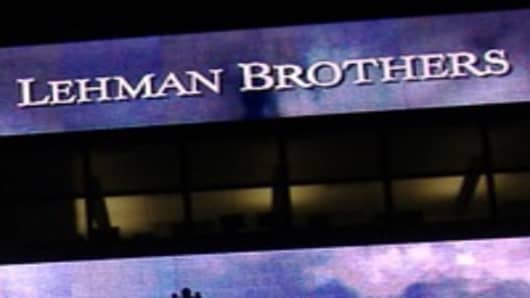For some hedge funds, Lehman Brothers has become the Roach Motel of Wall Street: They checked in, but they can’t check out.
Two weeks after Lehman spiraled into bankruptcy, hedge funds that did business with the Wall Street bank are still fighting to get their money out of the firm. For some, it has become a life-or-death struggle.
Big funds like GLG, Harbinger, Amber Capital and Elliott Associates have varying degrees of exposure to Lehman Brothers.
But even a $6.2 million fund run by students at the Darden School of Business at the University of Virginia has been caught up in the bankruptcy. The fund, like its larger counterparts, used Lehman as a prime broker, and no longer has access to its money.
Lehman is embroiled in a complex dispute with PricewaterhouseCoopers, its bankruptcy administrator in Britain. Pricewaterhouse claims that Lehman in New York transferred $8 billion out of its European subsidiary just before filing for bankruptcy, a move that could have blocked European hedge fund clients from removing assets.
Lehman Brothers officials in New York do not recognize the $8 billion figure and contend that there was a transfer into, not out of, the European subsidiary just before the bankruptcy filing. Officials from Lehman in New York are working with Pricewaterhouse to determine where the $8 billion figure came from, a process that could take weeks given the size of daily capital flows between the parent company and its overseas subsidiaries.
For hedge fund investors, many of whom will have negative returns this year, the almost certain prospect of having to take additional write-downs from unrecoverable assets at Lehman brings an extra level of concern. That could lead to more rapid redemptions and add to the unease in an industry facing regulatory pressures and greater scrutiny.
Many hedge funds have set the end of September as a cutoff date for investors who want to take their money out by the end of the year. With the future of the American bailout plan still unclear, some investors were expected to take the opportunity to retreat to a safer haven.
Hedge fund exposure to Lehman came in many forms and was not limited to its prime broker unit. Harbinger, the $13 billion fund that gained recognition for its successful bet against subprime mortgages, has exposure through complex swap agreements made with an obscure Lehman subsidiary.
In its filing, Harbinger said it was owed “not less than $250 million” from exposure to “swap agreements.” According to the filing, Harbinger’s exposure was to a wholly owned subsidiary of Lehman called Special Financing Inc.
Jeffrey Sabin, a lawyer representing Harbinger’s claim against Lehman said that Harbinger did not have assets in Lehman’s London prime brokerage unit.
While $250 million may seem a small amount for a fund the size of Harbinger, an accompanying footnote stating that “the full amount is still being calculated” is not likely to give outside investors much comfort.
While the prime brokerage unit of Lehman was not as dominant as Morgan Stanley , Goldman Sachs or even Bear Stearns, it did have some deep relationships with big hedge funds like Harbinger and GLG, one of the larger hedge funds in Europe.
As Lehman’s troubles grew this year, many funds began to withdraw assets, switching to larger banks like Credit Suisse. But the speed with which it fell surprised many, and assets — complex derivatives, futures, options, stocks and bonds — were immediately frozen.
Pricewaterhouse is now in the process of valuing these assets and determining how much can be returned to hedge funds and their investors.
For smaller funds, the combination of uncertainty and an expected write-down can be lethal. MKM Longboat, a $1.5 billion fund based in London that was a Lehman client, closed its doors last week because of poor performance.
Pursuit Capital, a small fund based in Greenwich, Conn., specializing in bonds supported by mortgages and aircraft leases, is also listed as a creditor of Lehman, according to court filings. This year, the fund blocked requests from investors to redeem assets. An executive at Pursuit did not respond to an e-mail message seeking more information on Pursuit’s Lehman exposure.
How investors react to Lehman exposure will be largely tied to the performance of their funds. Harbinger, for example has had a superb year in which some of its funds returned more than 100 percent because of bets against subprime mortgages — but its performance in recent months has fallen off sharply, especially in September.
Elliott, which focuses on distressed debt and is run by Paul Singer in New York, has fared well this year.
“As of Sept. 30, after provisioning for the Lehman exposure, we are still ahead more than 6 percent for the year-to-date; the Lehman exposure is very small for us,” a spokesman said in a statement.
Through August, GLG’s funds were down about 15 percent for the year; it also faces a large outflow of as much as $4 billion when one its top managers, Greg Coffey, leaves in November.
Recently, GLG said that its assets still stuck at Lehman were not material, but speculation is that the true exposure is larger because of the fund’s ties to the Lehman, which backed GLG at its founding.
In an environment when rumors can sink a bank, no less a hedge fund, GLG has taken measures to assuage investor concerns, and a person briefed on the matter said it would release a letter on Thursday to investors and the public quantifying its exposure to Lehman. While that number was not immediately known, this person said that it was not expected to contradict GLG’s earlier statements.



